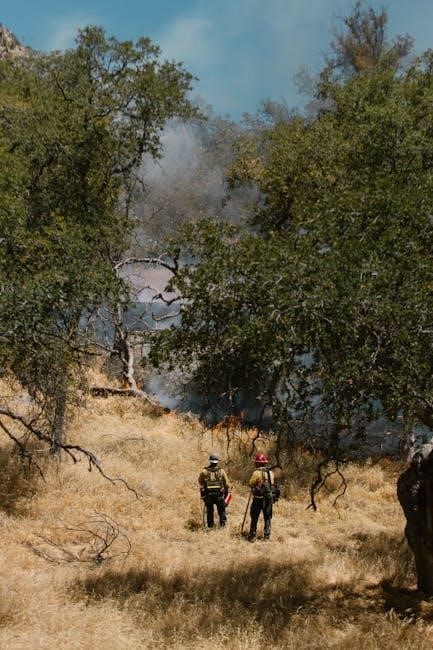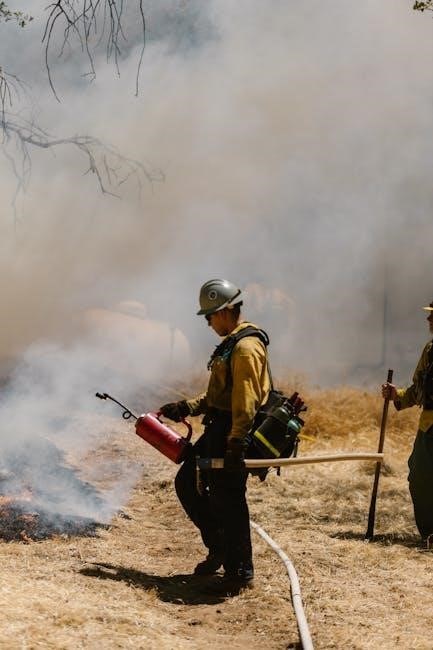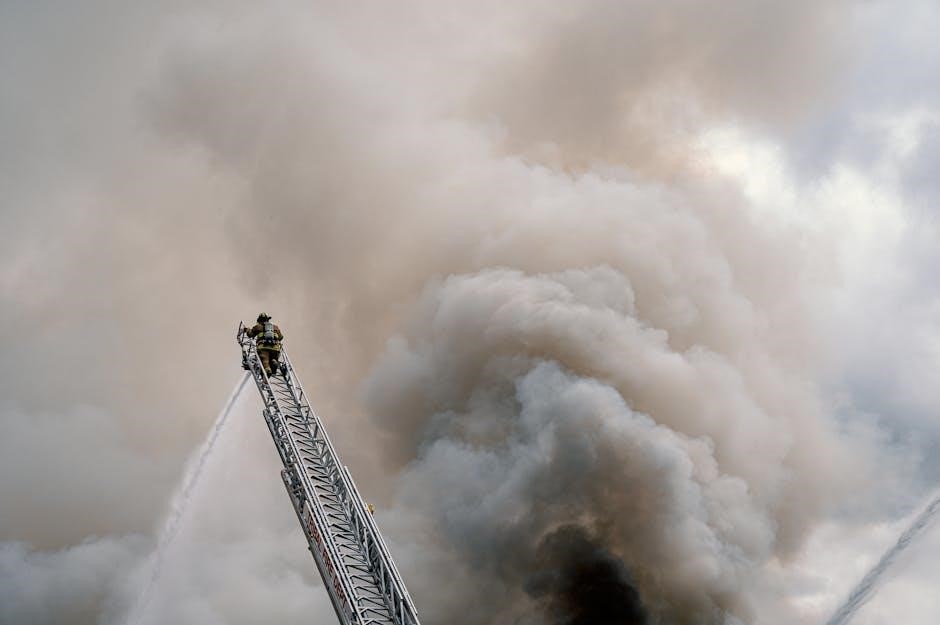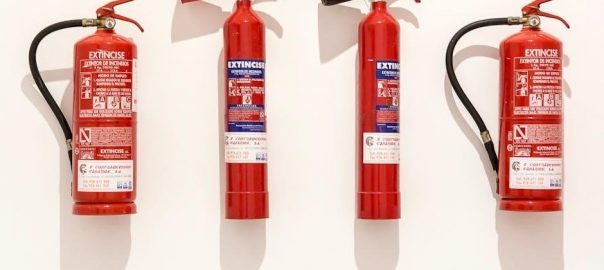The National Fire Protection Association (NFPA) establishes critical fire safety standards‚ with NFPA 10 focusing on portable fire extinguishers to ensure safety and compliance in various settings.
Overview of the National Fire Protection Association (NFPA)
The National Fire Protection Association (NFPA) is a nonprofit organization founded in 1896‚ dedicated to eliminating death‚ injury‚ property damage‚ and environmental harm caused by fire. It develops and publishes fire safety codes and standards globally‚ collaborating with fire departments‚ insurance companies‚ and building officials to promote safety and protect communities.
Importance of NFPA 10 in Fire Safety
NFPA 10 is a critical standard for portable fire extinguishers‚ ensuring they function effectively in emergencies. It establishes requirements for selection‚ installation‚ inspection‚ and maintenance‚ guaranteeing reliability. By adhering to NFPA 10‚ organizations can protect lives‚ property‚ and assets from fire hazards. The standard serves as a first line of defense‚ providing clear guidelines to mitigate fire risks and ensure compliance with safety regulations. Its implementation is vital for maintaining a safe environment.

Purpose and Scope of NFPA 10
NFPA 10 provides requirements for portable fire extinguishers‚ covering selection‚ installation‚ maintenance‚ and inspection to ensure effectiveness in fire emergencies and compliance with safety standards.
Regulations for Portable Fire Extinguishers
NFPA 10 mandates specific requirements for portable fire extinguishers‚ including installation‚ placement‚ and maintenance. Extinguishers must be installed within a maximum travel distance of 75 feet‚ ensuring accessibility. They must also be selected based on the fire hazard class (A‚ B‚ C‚ D‚ K) and rated for the specific risks present. Regular inspections and maintenance are required to ensure functionality‚ with records maintained for compliance. These regulations aim to provide a reliable first line of defense against fires.
Key Objectives of the Standard
NFPA 10 aims to ensure portable fire extinguishers are reliable and effective in controlling fires. The standard outlines requirements for selection‚ placement‚ and maintenance to maximize fire safety. It provides clear guidelines for extinguisher ratings‚ ensuring they match specific fire hazards. Regular inspections and maintenance are emphasized to guarantee functionality. These objectives promote a safer environment by enabling quick and effective response to fires‚ reducing risks and potential damage.

Placement and Installation Requirements
Extinguishers must be placed within 75 feet of travel distance‚ installed at heights between 3.5 and 5 feet‚ ensuring accessibility and visibility for quick response in emergencies.
Maximum Distance Between Extinguishers
Portable fire extinguishers must be placed no more than 75 feet apart to ensure quick access during emergencies. The maximum distance is determined by the extinguisher’s rating and the area it covers. NFPA 10 specifies that travel distance should not exceed 75 feet‚ ensuring extinguishers are readily accessible. This requirement balances safety and practical placement‚ guaranteeing visibility and availability for rapid response to fires of limited size.
Optimal Placement for Different Fire Hazards
NFPA 10 emphasizes strategic placement of extinguishers based on fire hazards. Class A extinguishers are placed near ordinary combustibles‚ while Class B are positioned near flammable liquids. Class C extinguishers are located near electrical equipment‚ and Class K units are required in commercial cooking areas. Placement ensures quick access‚ with clear visibility and unobstructed paths‚ adhering to specific fire hazard risks and ensuring effective first-line defense against fires. Proper positioning enhances safety and compliance with NFPA standards.
Compliance with Local and Federal Regulations
NFPA 10 requires adherence to both federal and local regulations to ensure fire safety. While the standard provides guidelines‚ enforcement is handled by local authorities. Organizations must stay informed about specific legal requirements in their area. Compliance involves regular inspections‚ proper documentation‚ and maintaining up-to-date certifications. Failure to comply can result in legal penalties and increased fire risks. Always consult local codes alongside NFPA 10 for comprehensive adherence to safety standards.
Selection and Classification of Fire Extinguishers
NFPA 10 emphasizes selecting extinguishers based on fire types (A‚ B‚ C‚ D‚ K) and matching their ratings to specific hazards. Proper classification ensures effective fire control and safety.
Understanding Fire Classes (A‚ B‚ C‚ D‚ K)
NFPA 10 categorizes fires into classes A‚ B‚ C‚ D‚ and K‚ each representing different fuel sources. Class A involves ordinary combustibles like wood and paper. Class B covers flammable liquids and gases‚ such as oil or propane. Class C pertains to electrical fires‚ while Class D deals with combustible metals like magnesium. Class K is specific to cooking oils and greases‚ requiring specialized extinguishing agents. Understanding these classes ensures proper extinguisher selection for effective fire control and safety.
Matching Extinguisher Ratings to Fire Risks
Matching extinguisher ratings to fire risks is crucial for effective fire suppression. NFPA 10 specifies that extinguishers must be rated according to the fire class they can handle. For example‚ a Class A extinguisher is designed for ordinary combustibles‚ while a Class B is suitable for flammable liquids. Ensuring the correct rating and type of extinguisher is available for specific hazards minimizes fire spread and enhances safety‚ aligning with NFPA standards to protect people and property effectively.
Specialized Extinguishers for Specific Hazards
Specialized extinguishers are designed to address unique fire hazards‚ such as Class D fires involving combustible metals‚ which require dry powder agents‚ and Class K fires in cooking oils‚ needing wet chemical extinguishers. NFPA 10 provides detailed guidelines for selecting and using these specialized extinguishers‚ ensuring they are effective and safe for specific risks‚ thereby enhancing fire safety in high-hazard environments like industrial kitchens or metalworking facilities.
Maintenance and Inspection Requirements
NFPA 10 requires regular inspections and maintenance of portable fire extinguishers‚ including visual examinations‚ pressure testing‚ and internal inspections‚ to ensure reliability and compliance with safety standards.
Frequency of Inspections and Maintenance
NFPA 10 mandates regular inspections and maintenance of portable fire extinguishers to ensure reliability. Inspections should occur monthly‚ with annual internal examinations and hydrostatic testing every 6 years. This ensures extinguishers remain functional‚ providing a critical first line of defense against fires. Compliance with these schedules is essential for safety and legal adherence‚ as outlined in the standard.
Common Inspection Checklist Items
A typical inspection checklist for NFPA 10 compliance includes verifying the extinguisher’s location‚ accessibility‚ and visibility. Inspectors check for proper signage‚ ensure pressure gauges indicate full charge‚ and test all mechanical components. They also look for damage‚ tampering‚ or corrosion. Labels must be legible‚ and the extinguisher must be free from obstructions. These checks ensure readiness for emergency use‚ adhering to NFPA 10 standards.
Consequences of Non-Compliance
Non-compliance with NFPA 10 standards can lead to severe legal‚ financial‚ and safety repercussions. Facilities may face fines‚ penalties‚ or even shutdowns. In the event of a fire‚ inadequate fire extinguishers can result in property damage‚ injuries‚ or loss of life. Liability claims and increased insurance costs may follow. Non-compliance also undermines workplace safety and can harm an organization’s reputation‚ emphasizing the importance of adhering to NFPA 10 guidelines.
Compliance and Legal Aspects
Adhering to NFPA 10 ensures facilities meet federal‚ state‚ and local fire safety laws‚ avoiding legal penalties and promoting a safe environment for occupants and assets.
Understanding Federal‚ State‚ and Local Laws
Compliance with NFPA 10 requires understanding federal‚ state‚ and local fire safety regulations. While NFPA standards provide guidelines‚ they do not supersede local laws. Facilities must ensure their fire extinguisher practices align with all applicable codes to avoid legal penalties. Certified professionals play a key role in interpreting these requirements and ensuring adherence. Non-compliance can lead to fines and increased liability‚ emphasizing the importance of staying informed about specific jurisdictional demands.
Role of Certified Professionals in Compliance
Certified professionals play a crucial role in ensuring compliance with NFPA 10 standards. They are responsible for conducting inspections‚ training staff‚ and verifying that fire extinguishers meet regulatory requirements. Their expertise ensures that fire safety measures are implemented correctly‚ reducing risks and potential legal penalties. Certified individuals must stay updated on the latest NFPA guidelines and adapt to changes in local and federal laws‚ making them essential for maintaining a safe and compliant environment.
Legal Implications of Non-Compliance
Non-compliance with NFPA 10 standards can result in severe legal consequences‚ including fines‚ legal actions‚ and increased liability in the event of a fire. Organizations may face penalties for failing to meet regulatory requirements‚ such as improper installation or inadequate maintenance of fire extinguishers. Additionally‚ non-compliance can lead to legal claims for damages if a fire occurs and proper safety measures were not in place‚ highlighting the importance of adhering to NFPA guidelines to avoid legal repercussions.

Training and User Education
Proper training ensures users can effectively operate portable fire extinguishers. NFPA 10 guidelines emphasize hands-on instruction and regular updates to maintain proficiency and safety standards.
Importance of Proper Training
Proper training is critical for the effective use of portable fire extinguishers. NFPA 10 emphasizes that users must understand fire classes‚ extinguisher ratings‚ and proper techniques to operate equipment safely. Training ensures individuals can act decisively in emergencies‚ minimizing risks and property damage; Regular updates and hands-on practice are essential to maintain proficiency and compliance with safety standards.
Guidelines for Effective Training Programs
Effective training programs under NFPA 10 should include both theoretical and hands-on instruction. Participants must learn fire classification‚ extinguisher operation‚ and proper techniques. Programs should emphasize regular updates‚ practical exercises‚ and assessments to ensure competency. Training ensures compliance with safety standards and equips individuals to handle fire emergencies confidently and effectively.
Resources for Training Materials
Training materials for NFPA 10 are widely available‚ including guides‚ videos‚ and interactive courses. The NFPA website offers official resources‚ such as downloadable PDFs and certification programs. Additionally‚ fire safety organizations provide supplementary materials‚ including training manuals and online tutorials. Mobile apps and webinars further enhance accessibility. These resources ensure comprehensive understanding and compliance with NFPA 10 standards‚ helping users stay updated and proficient in fire safety practices.

Comparing NFPA 10 with Other Standards
NFPA 10 specializes in portable fire extinguishers‚ differing from NFPA 13 (sprinkler systems) and NFPA 72 (alarm systems). It provides detailed extinguisher-specific guidelines beyond general fire codes.
Differences Between NFPA 10 and Other Fire Safety Standards
NFPA 10 specifically addresses portable fire extinguishers‚ unlike NFPA 13‚ which focuses on sprinkler systems‚ and NFPA 72‚ which covers alarm systems. While NFPA 10 provides detailed requirements for extinguisher placement‚ inspection‚ and maintenance‚ other standards like NFPA 101 focus on broader fire safety codes. This specialization ensures targeted compliance for portable extinguishers‚ making NFPA 10 unique in its application. Its guidelines are tailored to ensure extinguishers function effectively as a first line of defense against fires of limited size.
Key Similarities and Overlaps
NFPA 10 shares common principles with other fire safety standards‚ such as emphasizing regular inspections and maintenance to ensure equipment functionality. Like NFPA 13 and NFPA 72‚ it aligns with overarching fire safety goals‚ ensuring compliance with federal‚ state‚ and local regulations. Additionally‚ NFPA 10 overlaps with NFPA 101 in prioritizing occupant safety and hazard mitigation. These similarities ensure a cohesive approach to fire protection across different standards‚ promoting comprehensive safety measures.
Why NFPA 10 Stands Out
NFPA 10 distinguishes itself by providing detailed‚ actionable guidelines specifically for portable fire extinguishers‚ ensuring they are strategically placed‚ maintained‚ and used effectively. Its focus on maximizing coverage areas and addressing diverse fire hazards sets it apart from broader fire safety standards. Updates in NFPA 10-2018 enhance its relevance‚ while its emphasis on compliance with local and federal laws ensures it remains a cornerstone of fire safety practices‚ offering unparalleled clarity and specificity in its domain.

Recent Updates and Revisions
NFPA 10-2018 introduces updated guidelines for portable fire extinguisher placement‚ maintenance‚ and compliance‚ ensuring enhanced fire safety and alignment with current regulatory standards.
Latest Changes in NFPA 10-2018
NFPA 10-2018 features revised requirements for portable fire extinguisher placement‚ emphasizing maximum coverage and accessibility. Updates include new guidelines for extinguisher ratings‚ inspection frequencies‚ and compliance criteria to address evolving fire hazards. These changes aim to improve fire safety by ensuring extinguishers are strategically located and maintained to effectively combat various fire types and sizes.
Impact of Updates on Fire Safety Practices
The updates in NFPA 10-2018 have significantly enhanced fire safety practices by improving extinguisher placement‚ inspection‚ and maintenance protocols. These changes ensure better coverage‚ reduce response times‚ and increase the effectiveness of fire suppression. Enhanced requirements for equipment performance and accessibility have also led to improved compliance and reduced fire-related risks in various settings‚ fostering a safer environment through updated‚ evidence-based practices.
How to Stay Informed About Future Revisions
To stay informed about future revisions of NFPA 10‚ subscribe to NFPA newsletters and updates. Regularly visit the NFPA website for the latest standards and downloads. Attend webinars and training sessions hosted by certified professionals. Additionally‚ follow NFPA on social media for real-time updates and industry insights. Staying proactive ensures compliance with the most current fire safety practices and standards‚ safeguarding lives and property effectively. Always verify updates through official NFPA channels for accuracy and reliability.
Certification Process
Obtaining certification involves enrolling in NFPA-approved training programs‚ passing rigorous exams‚ and demonstrating proficiency in NFPA 10 standards. Certification ensures professionals are well-versed in fire safety protocols‚ compliance requirements‚ and the latest updates. It validates expertise‚ enhancing credibility and trust in fire safety practices. Regular continuing education is essential to maintain certification‚ keeping professionals updated on evolving standards and technologies. Certification is a critical step in ensuring effective fire safety management and compliance with NFPA regulations.
Steps to Become a Certified Professional
Obtaining certification under NFPA 10 involves completing an approved training program‚ passing a comprehensive exam‚ and demonstrating practical knowledge. Professionals must enroll in NFPA-certified courses‚ which cover fire safety standards‚ extinguisher maintenance‚ and compliance requirements. Upon completing the coursework‚ candidates must pass a certification exam to validate their expertise. Certification renewal requires ongoing education and staying updated on NFPA 10 revisions. This ensures professionals remain proficient in fire safety practices and regulations.
Role of Certification in Compliance
Certification ensures professionals are well-versed in NFPA 10 standards‚ enabling organizations to meet legal and safety requirements. It validates expertise in fire extinguisher management‚ guaranteeing compliance with installation‚ maintenance‚ and inspection protocols. Certified individuals help organizations avoid penalties and ensure workplace safety by adhering to NFPA guidelines and local regulations. This expertise is crucial for maintaining a compliant and safe environment‚ aligning with both NFPA and federal standards.
Benefits of Certification for Organizations
Certification enhances compliance with NFPA 10 standards‚ reducing fire risks and potential legal penalties. It ensures organizations maintain a safer workplace‚ protecting employees and assets. Certified professionals demonstrate expertise‚ fostering trust and credibility. Compliance with NFPA standards also aligns organizations with industry best practices‚ minimizing liability. By investing in certification‚ organizations showcase their commitment to safety and preparedness‚ contributing to long-term operational success and reputation.

Handling Different Types of Fires
Understanding fire classifications is crucial for effective extinguishing. NFPA 10 addresses various fire types‚ ensuring appropriate extinguishing methods for each class‚ crucial for compliance and effective fire safety in different scenarios.
Class A Fires: Ordinary Combustibles
Class A fires involve ordinary combustibles like wood‚ paper‚ cloth‚ and plastics. NFPA 10 emphasizes the use of water-based extinguishers‚ as they effectively cool and smother these fires‚ preventing re-ignition. Proper extinguisher selection and placement are critical to ensure rapid response and containment‚ aligning with NFPA 10’s guidelines for fire safety and compliance in various settings.
Class B Fires: Flammable Liquids and Gases
Class B fires involve flammable liquids or gases‚ such as gasoline‚ propane‚ or paint. NFPA 10 recommends using foam‚ dry chemical‚ or carbon dioxide extinguishers‚ as they effectively smother the fuel source and prevent oxygen interaction. Proper extinguisher selection is critical to safely manage these hazardous fires‚ especially in environments like garages or industrial settings where such materials are common. Compliance with NFPA 10 ensures effective fire suppression and safety in these high-risk scenarios.
Class C Fires: Electrical Equipment
Class C fires involve electrical equipment‚ such as appliances or wiring‚ and require specialized extinguishing agents. NFPA 10 recommends using dry chemical or carbon dioxide extinguishers‚ as they do not conduct electricity‚ ensuring safety. It’s crucial to shut off the power supply before extinguishing to prevent reignition. These fires pose unique hazards due to the risk of electric shock‚ making proper extinguisher selection and technique essential for safe and effective fire control.
Class D Fires: Combustible Metals
Class D fires involve combustible metals like magnesium or titanium. NFPA 10 specifies that these fires require specialized extinguishing agents‚ such as dry powder or sand‚ to smother the flames. Water and foam are ineffective and can exacerbate the fire. Proper training is essential‚ as metal fires burn at high temperatures and can reignite if not fully extinguished. NFPA guidelines emphasize the need for specific equipment and techniques to safely manage these unique fire hazards.
Class K Fires: Cooking Oils and Greases
Class K fires involve cooking oils and greases‚ often occurring in commercial kitchens. NFPA 10 requires specific extinguishing agents‚ such as wet chemical extinguishers‚ to effectively control these high-temperature fires. Water is ineffective and can cause fires to spread. Proper installation and maintenance of Class K-rated extinguishers are critical to ensure safety and compliance with NFPA standards‚ protecting both people and property from severe kitchen fire hazards.
NFPA 10 is essential for ensuring portable fire extinguishers are effective‚ providing a first line of defense against fires and promoting safety in various settings.
NFPA 10 provides critical guidelines for portable fire extinguishers‚ ensuring their effectiveness in combating fires. It outlines requirements for selection‚ installation‚ maintenance‚ and inspection‚ emphasizing compliance with federal‚ state‚ and local laws. The standard aims to safeguard lives and property by ensuring extinguishers are reliable and properly utilized. Adhering to NFPA 10 is essential for fire safety preparedness and legal compliance.
Final Thoughts on the Importance of NFPA 10
NFPA 10 is indispensable for ensuring fire safety and protecting lives and property. Its comprehensive guidelines for portable fire extinguishers provide a critical first line of defense against fires. Compliance with NFPA 10 not only enhances safety but also aligns with legal requirements‚ preventing potential liabilities. By adhering to this standard‚ organizations can effectively mitigate fire risks and foster a safer environment. Its importance cannot be overstated in modern fire safety practices.
Additional Resources
- NFPA 10 PDF: Download the latest version of NFPA 10 from the official NFPA website for comprehensive fire extinguisher guidelines and standards.
- Recommended Reading: Explore supplementary materials and references on fire safety practices and compliance available through NFPA publications and certified training programs.
Where to Download NFPA 10 PDF
The NFPA 10 PDF can be downloaded directly from the official National Fire Protection Association (NFPA) website. Visit their online store or resource section to access the standard. Additionally‚ certified training platforms and fire safety websites like DocDiesel or Safety.FM often provide links to the latest version of NFPA 10-2018. Ensure you use trusted sources to maintain compliance and accuracy in your fire safety practices.
Recommended Reading and References
For comprehensive understanding‚ refer to the NFPA 10-2018 Standard for Portable Fire Extinguishers and supplementary materials from the NFPA website. Additional resources include fire safety training platforms like DocDiesel and Safety.FM‚ which provide detailed guides and courses. NFPA also offers handbooks and training programs to enhance knowledge. For broader fire safety insights‚ explore NFPA 101 (Life Safety Code) and NFPA 72 (Fire Alarm Systems) for a well-rounded approach to fire protection compliance and best practices.
